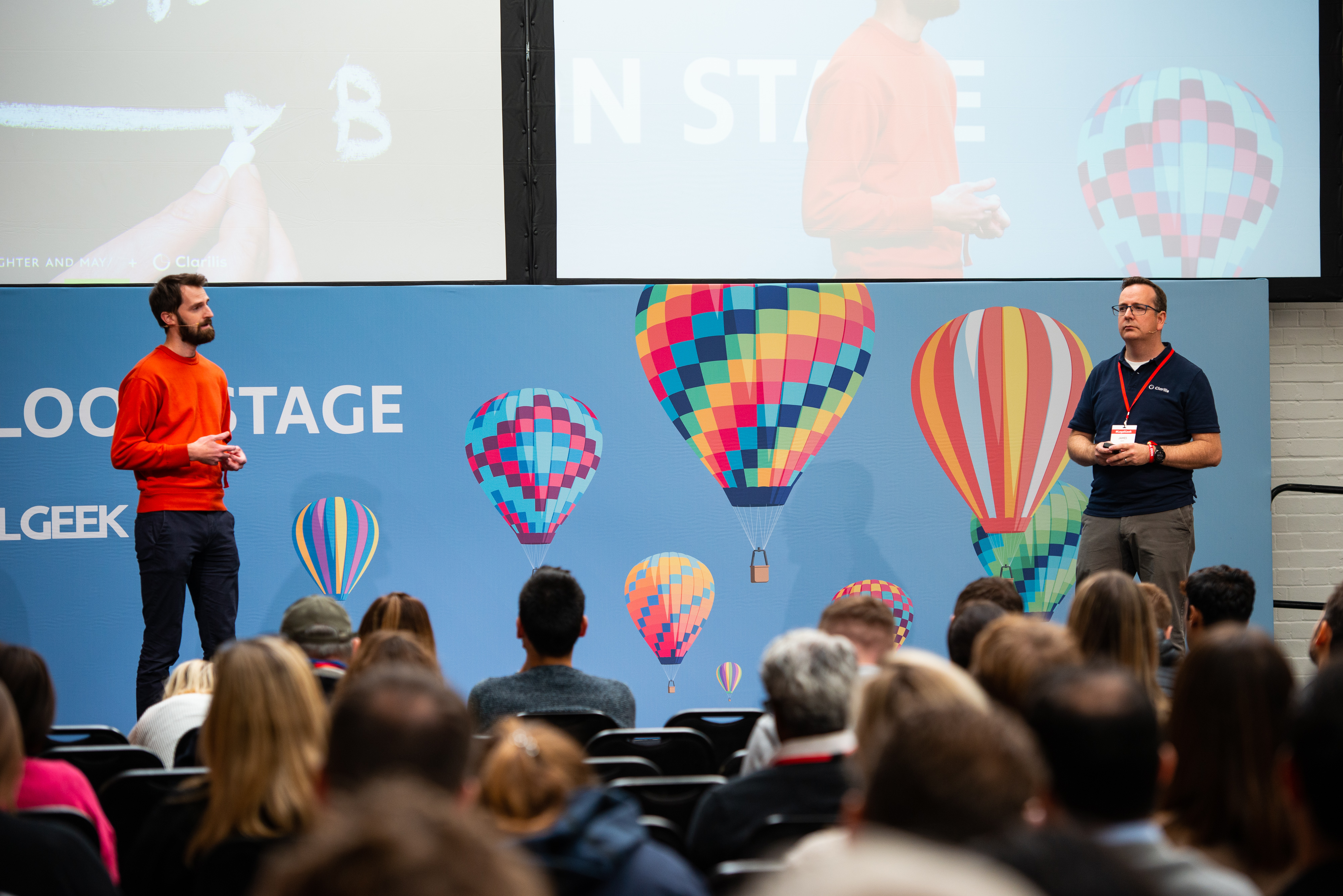For too long, technology in this space has been presented as a panacea. But it isn’t. You need to have a solid foundation and an effective implementation if your LegalTech project is to have any chance of success. For example, if you use clause search technology to extract clauses from first drafts containing random unfinished and unapproved clauses, then regardless of how advanced the technology’s feature set is, it is never going to deliver what you need. Similarly, applying workflow technology to model a free-flow process is destined to deliver disappointment. It can be equally underwhelming to automate precedents that don’t contain sufficient optionality to deliver a meaningful time saving for your drafting fee-earners.
What the industry needs is LegalTech providers who are willing to challenge the expectation that software alone will do it all out of the box. And what we saw at Legal Geek were promising signs that this is starting to happen. The message from the conference was clear: when it comes to successful implementation of LegalTech, preparation is key.
But what exactly do we mean by preparation?
The reality is that laying the foundations for a successful LegalTech project is hard work. So, when we were asked to speak at Legal Geek, we used our time on stage to highlight the three essential stages law firms should go through before they embark on an automation project. Here, we share the key takeaways from this presentation by James Quinn, CEO and co-founder of Clarilis, and Richard Batstone, Senior Knowledge and Innovation Manager at Slaughter & May.
Step 1: Discover
First, invest as much time as you can to find out what is actually happening in your law firm before adding technology into the mix. Are your fee-earners using the precedents you assume they use? Are they following the process you carefully laid out for them? Take a critical look around and ask yourself - if you build it, will they use it?
Skipping this stage can lead to costly mistakes.
"It's super obvious but this stage is often missed, and it's absolutely crucial to the success of your project,” James told the audience at Legal Geek. “A couple of years ago, I was asked to advise a firm on a document automation project. They automated quite a few documents, but only found out at launch that people weren't using the documents; they were far too aggressive a starting point for the drafting. Any amount of discovery upfront would have discovered this.”
Step 2: Simplify
It is easy to assume tech is the solution. This feeds a tendency to automate ‘as is’ without considering how the underlying process could be improved first. This is a missed opportunity. The reality is, if the information and processes you are feeding into your legal technology are flawed, the best you can expect is to produce the same imperfect output faster.
"It's always more valuable to simplify a process before trying to automate,” Richard emphasised. “Don't try and automate something as it is, instead ask yourself some questions. Where is effort being duplicated in this process? Where can steps be avoided? Do I even need this process or tool?”
Step 3: Standardise
Without standardisation, it is difficult to fully optimise replication opportunities. For example, it is impossible to automate drafting at scale when working with different precedents for individual partners or when there are bespoke ways of working for every client. The efficiency-driving potential of legal technology is usually best achieved when underlying processes are standardised first.
"So much of the success achieved by LegalTech comes from being built from standardised processes”, James explained. “If you've got a bad process or your underlying knowledge base is poor, LegalTech isn’t going to help you at all. This is why, at Clarilis, we spend so much time with our content partners standardising everything we possibly can.”
And then you automate. Or not.
Once you’ve gone through these three steps – discover, simplify and standardise – you’ll have a robust base for your automation project. You are ready to add the tech. Or maybe not. Sometimes the preparation process reveals standardisation eliminates the need for automation. Perhaps all that was needed were good quality, standardised precedents. The oneNDA project is perhaps the best demonstration of this.
"The oneNDA project shows the value you get from having an industry wide standard,” Richard added as an example. “The project took simplification and standardisation really seriously. And having created a standard, they found actually there's not really a need for technology because they’d simplified away the thing that the technology was trying to solve.”
When should legal technology vendors get involved?
At Clarilis, we prefer to get involved early and support clients through the preparation stages. Our professional support lawyers understand legal processes and can offer useful insight as you are navigating discovery, simplification and standardisation. If you are ready to start the preparation for your automation project, get in touch to arrange an initial conversation with our team.
Subscribe to blog
To stay up to date with all the latest news and insights, enter your email address.
(Privacy policy)
“"It's always more valuable to simplify a process before trying to automate”
Richard Batstone
Senior Knowledge and Innovation Manager, Slaughter & May



